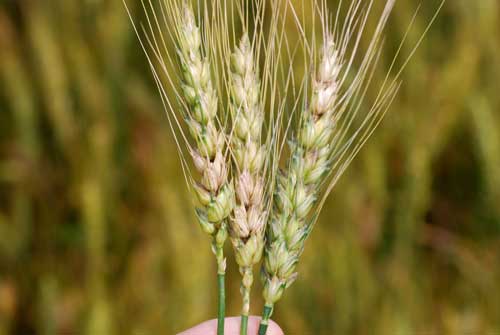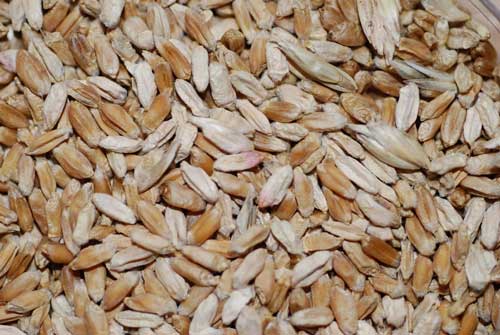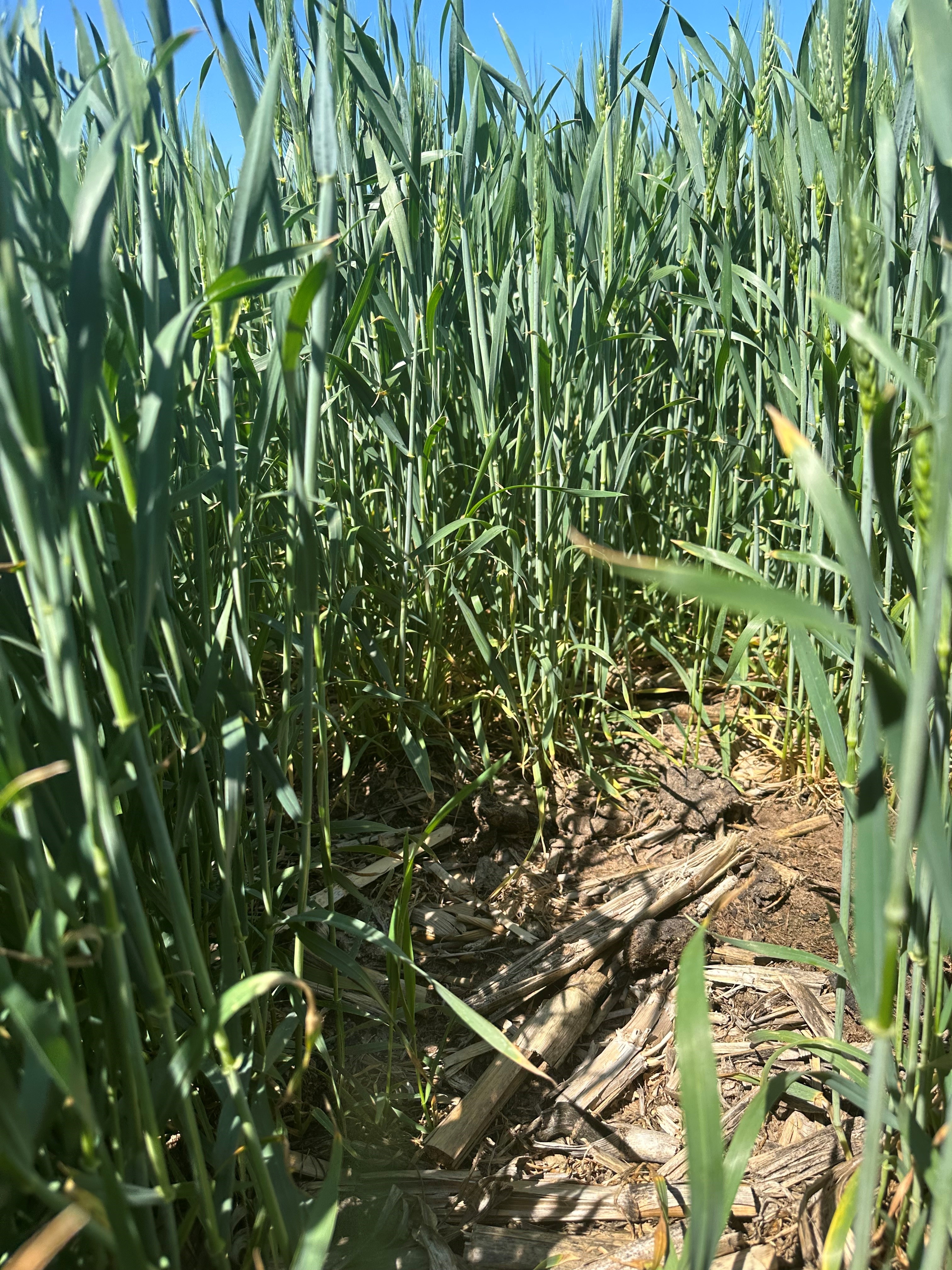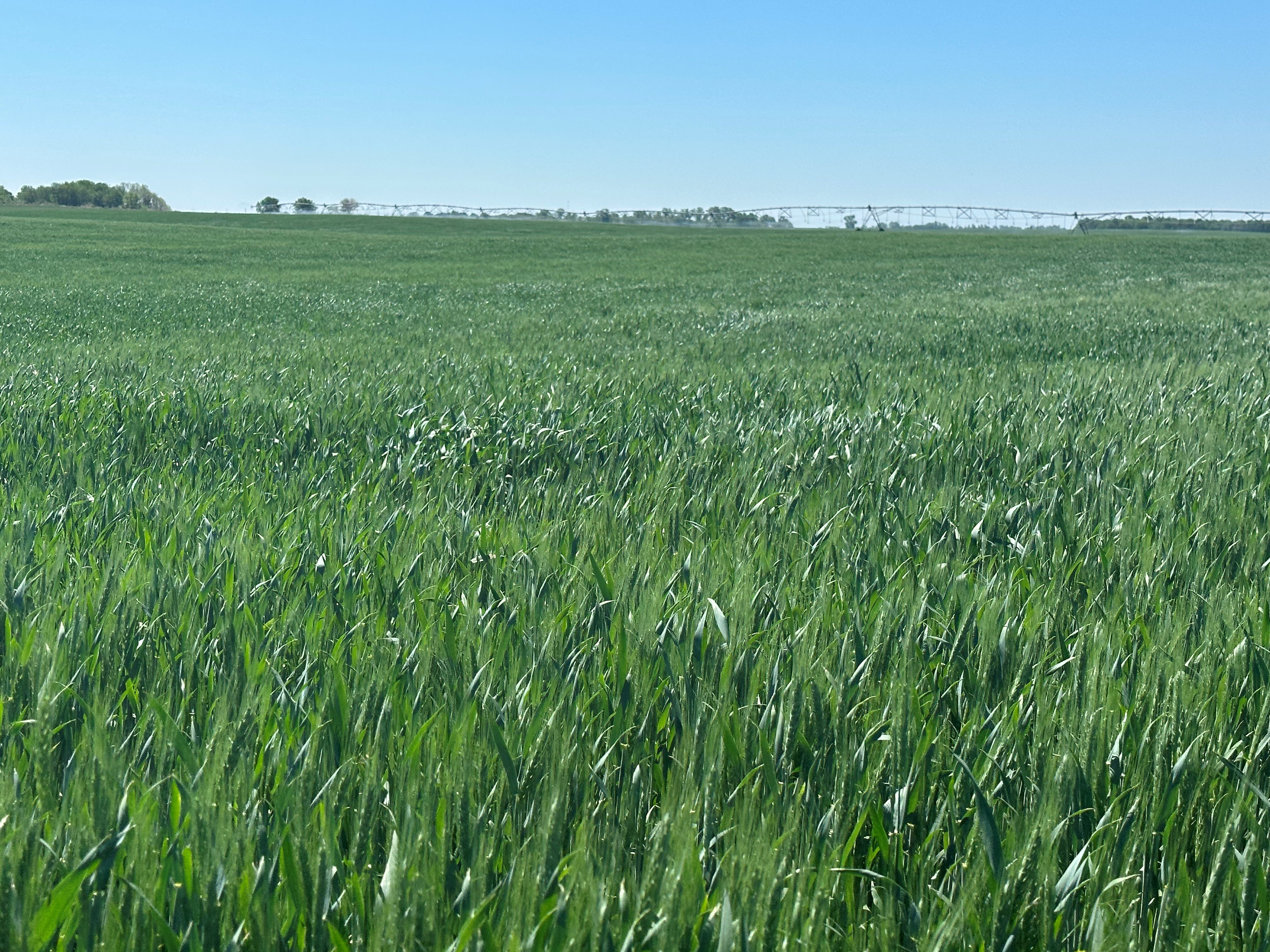Fusarium Head Blight (Head Scab) in Wheat
Head Scab is caused by the fungus Fusarium graminearum whose spores infect wheat heads and developing kernels, primarily during and after flowering. Typically, the first noticeable symptom is the bleaching of some or all the spikelets while healthy heads are still green. As the fungus moves into the stalk, spikelets located above or below the initial infection point may also become bleached.
.jpg)


Photo1 : Ok State Extension Photo 2 & 3: KSRE
Cause
The Disease triangle points out 3 conditions that must be met for a disease to become a problem:
- Pathogen – In the case of head scab, the pathogens overwinter in corn residue. In the spring, the fungus resumes growth on the corn residue and produces spores.
- Favorable Weather Conditions – The fungus thrives in temperatures between 75-85 degrees, some humidity, and as little as 2-3 inches of rainfall or irrigation.
- Host Plant – In most of Kansas, this is wheat.
Reasons to be concerned:
- Under favorable conditions, head scab can be detrimental to wheat yields in Kansas.
- According to Crop Protection Network. Yield losses can exceed 50% with favorable conditions.
Treatment
At this time of the season, prevention with fungicides is the only option. Other ways to prevent Head Scab include planting wheat varieties that are highly resistant to the fungus and managing residue when possible, by tillage following a corn rotation.


Photos courtesy of Tyree Ag salesman, Jacob Glavin.
Learn more about Head Scab:
K-State Research & Extension - Fusarium Head Blight
Kansas Wheat - Fusarium head blight (scab)
Oklahoma State University Extension - Fusarium Head Blight (Head Scab)
KP
